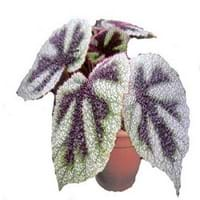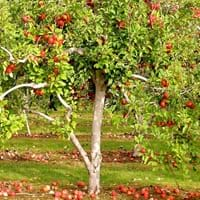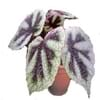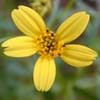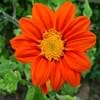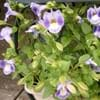Life Span
Perennial
Perennial
Type
Herbaceous Perennial
Flowering Plants, Fruits, Trees
Origin
Chile, Southeast Asia
Central Asia
Types
Not Available
Aceymac apple, Bailey Sweet apple, Dabinett apple, Nehou apple
Number of Varieties
Not Available
Habitat
Mountain forests, subtropical regions, Terrestrial
Hillside
USDA Hardiness Zone
11-12
5-8
Sunset Zone
H1, H2, 24
A1, A2, A3, 8, 9, 10, 11, 12, 13, 14, 15, 16, 17, 18, 19, 20, 21, 22, 23, 24
Habit
Clump-Forming
Oval or Rounded
Flower Color
Dark Blue
White
Flower Color Modifier
Bicolor
Not Available
Fruit Color
Tan
Green, Red
Leaf Color in Spring
Light Green
Dark Green
Leaf Color in Summer
Light Green
Green
Leaf Color in Fall
Light Green
Brown, Green, Light Yellow
Leaf Color in Winter
Light Green
Not Available
Plant Season
Fall, Spring, Summer
Spring
Sunlight
Full Sun
Full Sun, Partial shade
Growth Rate
Medium
Medium
Type of Soil
Loam, Sand
Loamy
The pH of Soil
Acidic, Alkaline, Neutral
Neutral
Soil Drainage
Well drained
Well drained
Bloom Time
Early Summer, Late Spring
Fall, Summer
Tolerances
Drought
Drought
Where to Plant?
Container, Ground, Pot
Ground
How to Plant?
Seedlings, Stem Cutting
Grafting, Seedlings, Transplanting
Plant Maintenance
Medium
Medium
Watering Requirements
Keep ground moist, Keep the Soil well drained, Requires regular watering
Medium
In Summer
Lots of watering
Lots of watering
In Spring
Moderate
Moderate
In Winter
Average Water
Average Water
Soil pH
Acidic, Alkaline, Neutral
Neutral
Soil Type
Loam, Sand
Loamy
Soil Drainage Capacity
Well drained
Well drained
Sun Exposure
Full Sun
Full Sun, Partial shade
Pruning
Remove damaged leaves, Remove dead branches, Remove dead leaves
Prune when plant is dormant, Remove dead or diseased plant parts
Fertilizers
10-10-5, All-Purpose Liquid Fertilizer
All-Purpose Liquid Fertilizer
Pests and Diseases
Aphids, Mealy bugs, No serious insect or disease problems, Red spider mite
Aphids, Canker, Caterpillars, Powdery mildew, Root rot
Plant Tolerance
Drought
Drought
Flower Petal Number
Single
Single
Foliage Texture
Fine
Medium
Foliage Sheen
Matte
Matte
Attracts
Birds, Bugs, Insects, Not Available
Birds
Allergy
Unknown
Mouth itching, Throat itching
Aesthetic Uses
Bonsai, Borders, Landscape Designing, Mixed Border, Showy Purposes, Used for decorating walls, fences, gates, hedges, etc.
Not Used For Aesthetic Purpose
Beauty Benefits
Not Available
Not Available
Environmental Uses
Air purification
Air purification
Medicinal Uses
No Medicinal Use
Cancer, constipation, Diabetes, Diarrhea, Dysentry, Fever, Heart problems, Tooth ache
Part of Plant Used
Not Available
Fruits
Other Uses
Decoration Purposes, Showy Purposes, Used as Ornamental plant, Used for Landscaping
Used As Food, Wood is used for making furniture
Used As Indoor Plant
Yes
No
Used As Outdoor Plant
Yes
Yes
Garden Design
Bonsai, Container, Hanging Basket, Landscape
Fruit / Fruit Tree, Shade Trees, Showy Tree
Botanical Name
Begonia masoniana
Malus domestica
Common Name
Angel's Wings, Butterfly Flower, Poor Man's Orchid
Apple Tree
In Hindi
iron cross begonia
सेब का वृक्ष
In German
Eisenkreuz Begonie
Apfelbaum
In French
croix de fer bégonia
Pommier
In Spanish
el hierro cruzado begonia
Manzano
In Greek
σταυρό μπιγκόνια σιδήρου
μηλιά
In Portuguese
begônia cruz de ferro
Macieira
In Polish
Iron Cross begonia
jabłoń
In Latin
ferrum crucem Begonia
Arbore
Phylum
Tracheophyta
Magnoliophyta
Class
Magnoliopsida
Magnoliopsida
Order
Cucurbitales
Rosales
Family
Begoniaceae
Rosaceae
Clade
Angiosperms, Eudicots, Rosids
Angiosperms, Eudicots, Rosids
Tribe
Not Available
Not Available
Subfamily
Not Available
Not Available
Number of Species
Not Available
Season and Care of Begonia masoniana and Apple Tree
Season and care of Begonia masoniana and Apple Tree is important to know. While considering everything about Begonia masoniana and Apple Tree Care, growing season is an essential factor. Begonia masoniana season is Fall, Spring and Summer and Apple Tree season is Fall, Spring and Summer. The type of soil for Begonia masoniana is Loam, Sand and for Apple Tree is Loamy while the PH of soil for Begonia masoniana is Acidic, Alkaline, Neutral and for Apple Tree is Neutral.
Begonia masoniana and Apple Tree Physical Information
Begonia masoniana and Apple Tree physical information is very important for comparison. Begonia masoniana height is 60.00 cm and width 30.00 cm whereas Apple Tree height is 25.00 cm and width 20.00 cm. The color specification of Begonia masoniana and Apple Tree are as follows:
Begonia masoniana flower color: Dark Blue
Begonia masoniana leaf color: Light Green
Apple Tree flower color: White
- Apple Tree leaf color: Dark Green
Care of Begonia masoniana and Apple Tree
Care of Begonia masoniana and Apple Tree include pruning, fertilizers, watering etc. Begonia masoniana pruning is done Remove damaged leaves, Remove dead branches and Remove dead leaves and Apple Tree pruning is done Prune when plant is dormant and Remove dead or diseased plant parts. In summer Begonia masoniana needs Lots of watering and in winter, it needs Average Water. Whereas, in summer Apple Tree needs Lots of watering and in winter, it needs Average Water.
